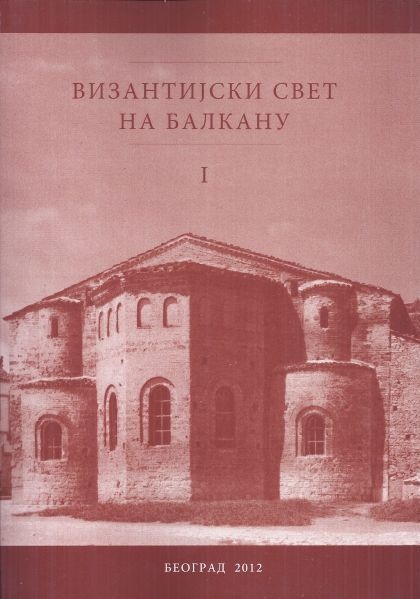Свети Сава и подизање Милешеве
Saint Sava and the Construction of Mileševa
Author(s): Gojko Subotić, Ljubomir Maksimović
Subject(s): Cultural history, History of Church(es), Local History / Microhistory, 13th to 14th Centuries, Eastern Orthodoxy
Published by: Vizantološki institut SANU
Summary/Abstract: The portraits of the historical personalities in Mile{eva are a primary source for the question of when the monastery was built, considering that the biographers of the archbishop Sava Nemanji}, either make no mention of the latter's role in its construction (Domentijan) or do not record that role specifically, even though connecting it with the time of King Vladislav (Teodosije). In the naos, Vladislav is depicted as the donor, and in the narthex he appears, on the western wall, with the members of his family, conducted by St. Simeon, while depicted on the southern wall are SS. Constantine and Helen and an unknown person in the robes of a Byzantine ruler. Having in mind that Saint Sava was also the creator of the thematic program in the Church of the Mother of God in Studenica, we should focus our consideration on a text — the famous inscription at the base of the dome — penned by Saint Sava himself. The inscription stresses that the Grand Zhupan Simeon Nemanja was the svat of the Greek emperor Alexios (III) Angelos (meaning that Alexios' daughter Eudokia was married to Nemanja's son, Stefan.) The cited words are all the more worthy of attention by virtue of the fact that in 1208/9, when the inscription was composed, Eudokia was no longer married to Sava's brother, nor was Alexios III even on the throne of the Byzantine Empire to see the fall of Constantinople in the IV Crusade (1204). The inscription testifies to the unchanged relationship towards Byzantine authority even after such a colossal disaster as the first collapse of the Empire in 1204. One can see the same relationship in Mile{eva as well. Here, with the image of Stefan the First Crowned, just as with Nemanja in Studenica, direct kinship is highlighted with the Byzantine ruling house, that is to say, with Alexios III. Be side the portrait of Stefan, in the right, preserved part of the inscription, one can read: Stefan, son of Saint Simeon Nemanja, son-in-law of the Greek emperor, kyr Alexios. For those reasons, it is certain that the image of the Byzantine ruler in Mile{eva represented the emperor Alexios III Angelos. With a clear scheme en compassing the members of the two dynasties and determining their relationships, Sava closed the thematic circle dedicated to the historical personalities who were direct and indirect involved in the construction of Mile{eva and its decoration.
Book: Византијски свет на Балкану I-II
- Page Range: 97-109
- Page Count: 13
- Publication Year: 2012
- Language: Serbian
- Content File-PDF

